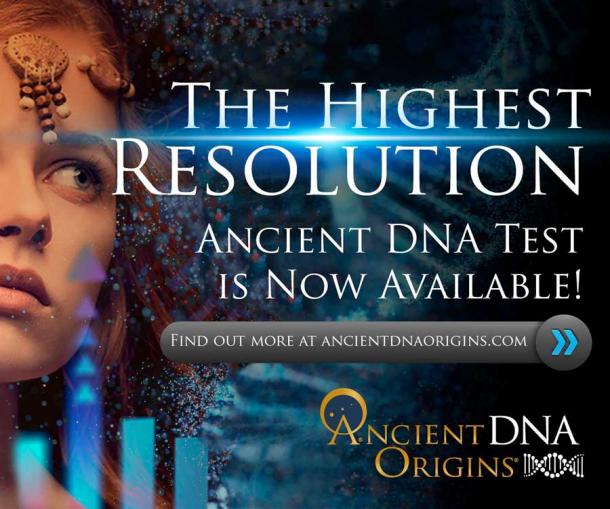
Otzi's non-human DNA: Opportunistic pathogen discovered in ancient Iceman
Ötzi the iceman, as he has come to be known, is a 5,300-year-old mummy who was discovered by some German tourists in the Alps in 1991. He was originally believed to be the frozen corpse of a mountaineer or soldier who died during World War I, but tests later confirmed the iceman dates back to 3,300 BC and most likely died from a blow to the back of the head. He is Europe's oldest natural human mummy and, remarkably, his body contained the still intact blood cells, which resembled a modern sample of blood. They are the oldest blood cells ever identified. His body was so well-preserved that scientists were even able to determine that his last meal was red deer and herb bread, eaten with wheat bran, roots and fruit.
Ötzi's human genome was decoded from a hip bone sample taken from the 5,300 year old mummy. However the tiny sample weighing no more than 0.1 g provides so much more information. A team of scientists from EURAC in Bolzano/Bozen together with colleagues from the University of Vienna successfully analysed the non-human DNA in the sample. They found evidence for the presence of Treponema denticola, an opportunistic pathogen involved in the development of periodontal disease. Thus, by just looking at the DNA, the researchers could support a CT-based diagnosis made last year which indicated that the Iceman suffered from periodontitis. The results of the current study have recently been published in the online scientific journal PLOS ONE.

Researchers take a sample from Iceman's hip. Image credit: Samadelli Marco/EURAC
Much of what we know about Ötzi -- for example what he looked like or that he suffered from lactose intolerance -- stems from a tiny bone sample which allowed the decoding of his genetic make-up. Now, however, the team of scientists have examined more closely the part of the sample consisting of non-human DNA. "What is new is that we did not carry out a directed DNA analysis but rather investigated the whole spectrum of DNA to better understand which organisms are in this sample and what is their potential function," is how Frank Maixner, from the EURAC Institute for Mummies and the Iceman in Bozen/Bolzano, described the new approach which the team of scientists are now pursuing.
"This 'non-human' DNA mostly derives from bacteria normally living on and within our body. Only the interplay between certain bacteria or an imbalance within this bacterial community might cause certain diseases. Therefore it is highly important to reconstruct and understand the bacterial community composition by analysing this DNA mixture," said Thomas Rattei, Professor of Bioinformatics from the Department of Microbiology and Ecosystem Science at the University of Vienna.
Unexpectedly the team of scientists, specialists in both microbiology as well as bioinformatics, detected in the DNA mixture a sizeable presence of a particular bacterium: Treponema denticola, an opportunistic pathogen involved in the development of periodontitis. Thus this finding supports the computer tomography based diagnosis that the Iceman suffered from periodontitis. Even more surprising is that the analysis of a tiny bone sample can still, after 5,300 years, provide us with the information that this opportunistic pathogen seems to have been distributed via the bloodstream from the mouth to the hip bone. Furthermore, the investigations indicate that these members of the human commensal oral microflora were old bacteria which did not colonise the body after death.
Besides the opportunistic pathogen, the team of scientists led by Albert Zink -- head of the EURAC Institute for Mummies and the Iceman -- also detected Clostridia-like bacteria in the Iceman bone sample which are at present most presumably in a kind of dormant state. Under hermetically sealed, anaerobic conditions, however, these bacteria can re-grow and degrade tissue. This discovery may well play a significant part in the future conservation of the world-famous mummy. "This finding indicates that altered conditions for preserving the glacier mummy, for example when changing to a nitrogen-based atmosphere commonly used for objects of cultural value, will require additional micro-biological monitoring," explained the team of scientists who will now look closer at the microbiome of the Iceman.
Story Source: The above story is based on materials provided by Science Daily. Note: Materials may be edited for content and length.
Featured image: Ötzi the Iceman. Photo source: Wikipedia

















Comments
Interesting: Lactose intolerance in infancy resulting from congenital lactase deficiency is a rare disorder. Its incidence is unknown. This condition is most common in Finland, where it affects an estimated 1 in 60,000 newborns.
Approximately 65 percent of the human population has a reduced ability to digest lactose after infancy. Lactose intolerance in adulthood is most prevalent in people of East Asian descent, affecting more than 90 percent of adults in some of these communities. Lactose intolerance is also very common in people of West African, Arab, Jewish, Greek, and Italian descent.
The prevalence of lactose intolerance is lowest in populations with a long history of dependence on unfermented milk products as an important food source. For example, only about 5 percent of people of Northern European descent are lactose intolerant.
Can't get enough of Otzi! What a rock.
thank you for kindly clearing that up. i thought about it later and thought that's what you'd say.
love, light and blessings
AB
or maybe i'm not reading it right....?
love, light and blessings
AB
The two statements you have cited are not incompatible with one another. 3,300 BC and a 5,300 year old mummy are the same time period as you would add our current year, 2015, to the 3300 BC which equals a 5,315 year old mummy.
Hi Angie,
Sorry for the confusion. It is though the same thing: 3,300 BC (before christ) + 2000 years (after christ) is 5,300 years old.
All the best,
April
Pages